News
16 January 2019 - The final preparations for the opening of the 52nd Herceg Novi Winter Salon, which is scheduled for January 31 (Thursday) at 7 pm, are underway, all according to the established tradition of opening the Salon every year as an overture to the Mimosa Festival.
The selector of this year's Herceg Novi Winter Salon is Senka Subotić, a sociologist of culture and art from Budva. The Herceg Novi Salon, under the motto "Parallels," is conceived as a synthesis of various artistic expressions of authors who have been creating and working on the territory of the former Yugoslavia in the last few decades. The Winter Salon aims to present the current situation and to set a certain number of parallels between contemporary painting directions of that area. By presenting themselves at the Salon, with two works, artists point to the development of modern trends in the field of art. The influence of their predecessors is also noticeable, and therefore, they also cherish the tradition of the old artists from the area they come from.
The works of twenty artists from various academies from the territory of the former Yugoslavia will be presented at the Salon. Some of these academies are relatively young, and their representatives are hosted by the Herceg Novi Winter Salon for the first time.
The majority of the artists whose works will be exhibited at the Winter Salon come from Montenegro. Miodrag Šćepanović, Peko Nikčević, Zoran Petrušić and Sreten Nikčević have already presented at the Herceg Novi Winter Salon, while Elvir Lero Adrović, Ivana Babić, Isidora Dautović, Goran Ćetković, Jelena Đurašković, Miodrag Mišo Vemić, and Marija Vemić will present their work to the guests of the Herceg Novi Winter Salon for the first time.
Foreign exhibitors of the Salon include: Silva Radić, Ivan Pavlović and Josip Ivešić (Academy of Fine Arts of the University of Mostar), Milan Krajnović, Renato Rakić and Boris Eremić (Academy of Arts of the University of Banja Luka), Jelena Trajković, Kristina Pirković (Belgrade Academy of Arts) and Milija Belić (President of the board of Salon Realities Nouvelles in Paris).
16 January 2019 - The National Tourism Organization of Montenegro and the European Travel Commission (ETC) have organized a four-day visit of the country for journalists from Brazil.
The arrangement above is the result of a prize competition organized annually by the European Commission for journalists of print media, television, and bloggers. The main award of the competition is a journey for the reporters to get acquainted with a particular destination.
During the first part of their visit to Montenegro, Brazilian journalists stayed in Budva, where, aside from the Old Town, they visited the Archaeological Museum. They were also guests of the local Tourist Organization Budva, which organised a welcoming dinner with folklore performance.
Also, guests from Brazil visited the Old Town and the Old Olive in Bar, one of the family wineries in Virpazar, and then Kotor, Tivat and Herceg Novi in cooperation with the local tourist organisations of these cities.
In the framework of getting acquainted with the offer of the northern region, the journalists stayed at Žabljak where they had the opportunity to enjoy lunch in a restaurant on the Black Lake and taste various drinks from the glasses made of ice. Also, in cooperation with the local tourist organisation, they visited Danilovgrad, the monastery "Ostrog" and the exhibition of the Art Colony of Danilovgrad.
With the inevitable visit to the Đurđevića Tara Bridge, their journey will continue with a visit to Serbia, by the practice of joint promotion of the region.
The representatives of the National Tourism Organization of Montenegro are delighted with this opportunity to introduce Montenegro to foreign journalists. This organisation aims to present the destination to foreign markets, contribute to the strengthening of the image of Montenegro as a tourist destination and better positioning, both in the Brazilian market and in the global travel industry in general.
January 16, 2019 - Muo is one of the oldest shore settlements in Boka Bay, which we can recognize by the fact that the Dalmatian-Romanic dialect is best preserved here. It is particularly evident in maritime and fishery terminology, and we can see that fishing has always been the leading economy of the area.
Today Muo is one of the architectural pearls in the chain of the Bay of Kotor, which, unfortunately, has not been immune to building pressures affecting the entire Boka Bay. But the ever-expanding houses by the sea, built in the Middle Ages, left less room for devastation than other places along our coast. Muo is today a popular destination for tourists who want to escape the city bustle and enjoy the silence and beauty of the Bay of Kotor. However, there are also some days when the locals take care of their guests getting closer to the spirit of the place, once an everlasting signing stage of its inhabitants.
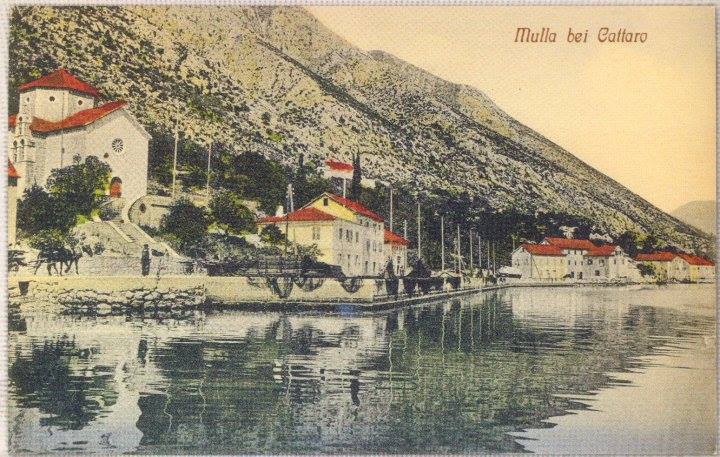
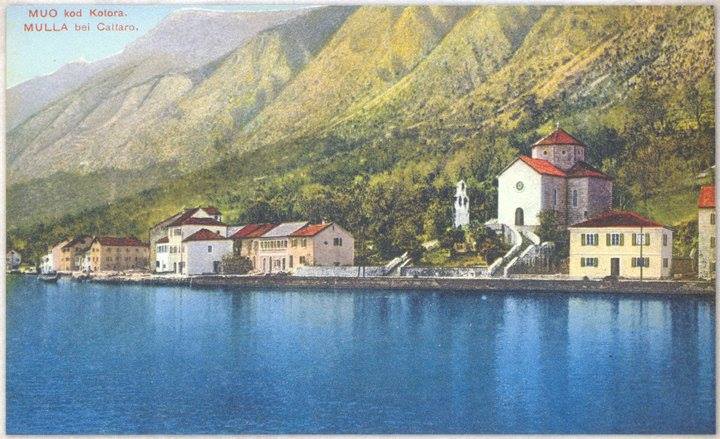
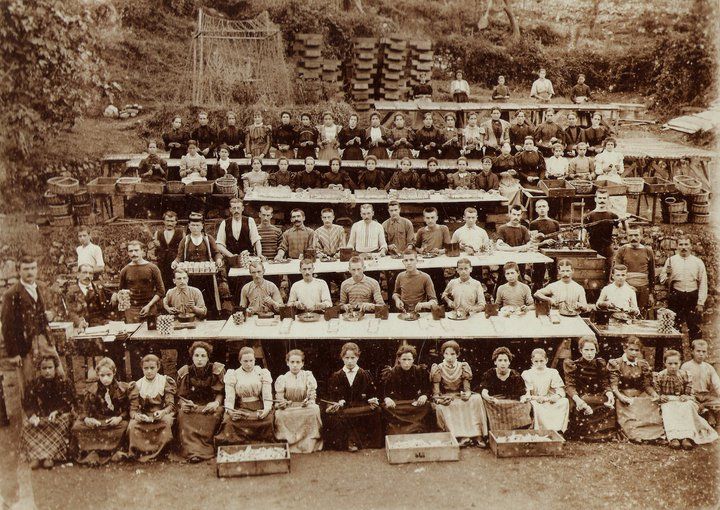
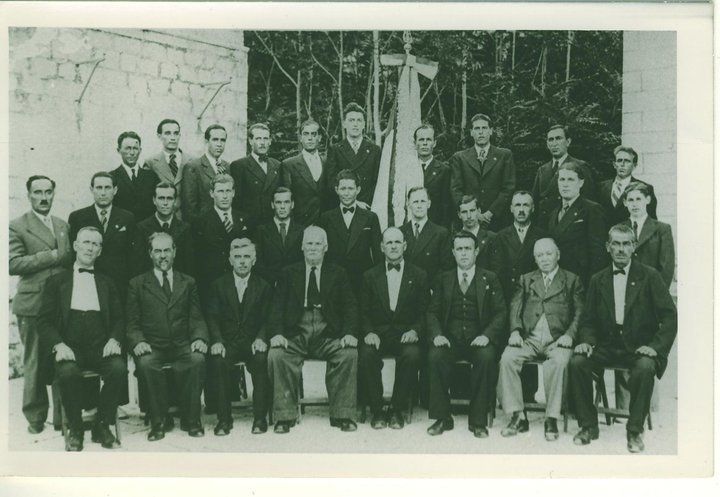
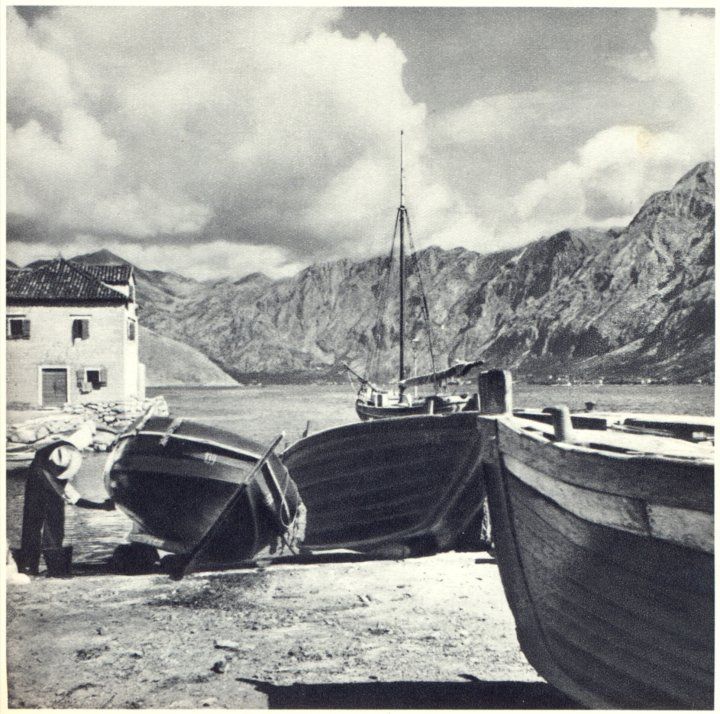
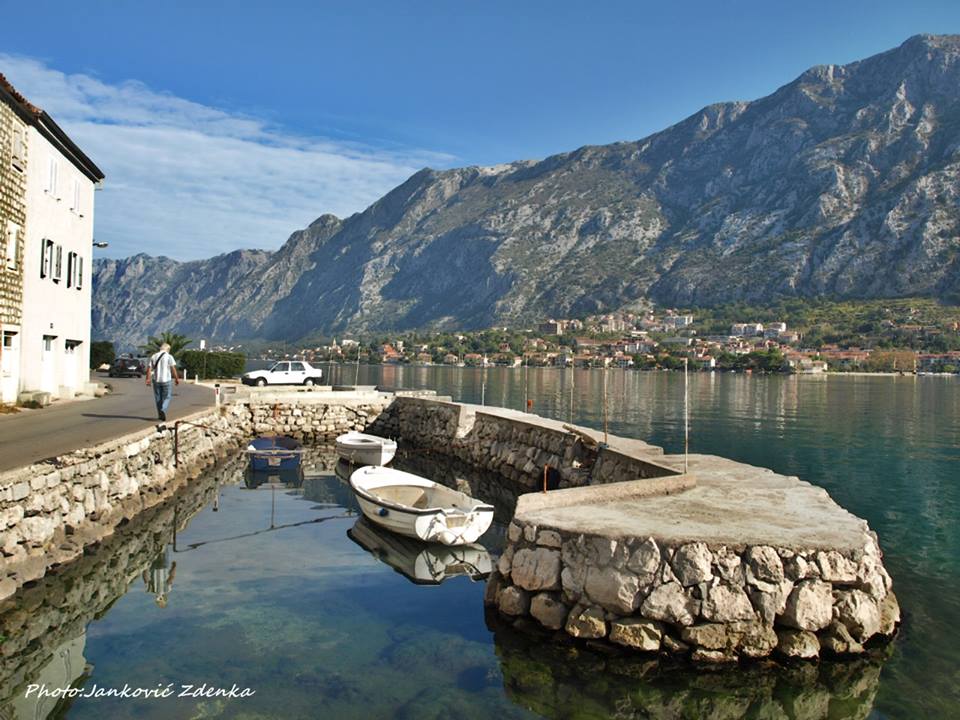 photo by Zdenka Jankovic
photo by Zdenka Jankovic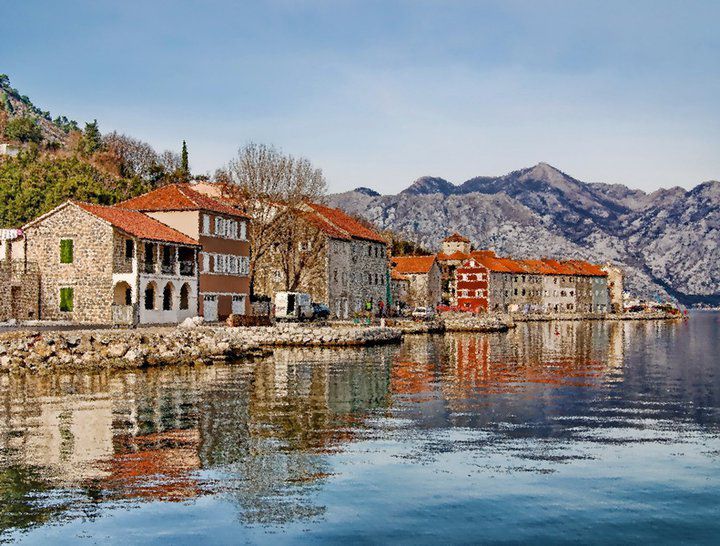 photo by Zoran Nikolic
photo by Zoran NikolicGoga Bitadze played only four games in Euro league - enough to show his potential. Since coming to Buducnost Voli, the 19-year-old Georgian scored an average of 14.8 points, 6.8 rebounds and 3.3 blocks per match.
"Frankly, I did not expect this kind of start. All I expected is to look into the mirror after every game and say that I have done my best," Bitadze said in an interview with the official website of Euro league. In the last round, Buducnost achieved the first win since his arrival, at his premier match in Moraca, against Darussafaka - 75:74.
"It was a great experience to play before the home audience; I couldn’t wait to play in front of our fans, they gave us energy, it's a great feeling to win in such an atmosphere," he said.
Changing the club in the middle of the season and joining the Euro league was a big challenge.
"I fit in nicely, thanks to my teammates, and Buducnost is a good team, champion of the ABA league. But in the beginning, the first few days were not easy, but now I am used to it, and my teammates and coaches are helping me. I am thinking only about basketball; it is my job, I'm focused on it."
Bitadze came at the same time as Norris Cole.
"Noris is a double NBA champion, and that's enough to say about him. He has a lot of experience, he's a great guy and a teammate, it's excellent for me to play with such a player, from whom I already learned a lot. He is a great player, talks a lot, he is very loud and wants to help everyone. He has shown what he can do, and I think he can do much more."
Buducnost hosts Real Madrid, Europe's champions, on Friday.
"It's going to be a crazy game. We need to be calm, we know who Real is, but in the atmosphere in Podgorica everything is possible, the cheering will be crazy. My teammates beat CSKA, Baskonia and Barcelona... It will be a huge experience for me. Last year in Belgrade I watched the final-four, now I have a chance to play against Real. I have to use it," said Bitadze.
Text by Vijesti Sport, on January 15th, 2019, read more at Vijesti
Representatives of the Government of Abu Dhabi are particularly interested in the Port of Bar, as well as for the implementation of a number of projects in the field of tourism, it was announced at the meeting of Montenegrin President Milo Djukanovic and Sheikh Haze Bin Zayed Al Nahyan.
From Djukanovic's Information Service, it was announced that, in addition to Tet-a-Tet talks, the expanded composition included development experiences and opportunities for further attraction of investments in Montenegro from the United Arab Emirates.
"Education was also one of the important topics in this conversation, especially in the context of the importance of foreign investment for Montenegro, to which besides capital, comes new knowledge and new management skills," it was said in the statement.
Al Nahyan, as it is added, leads the government of Abu Dhabi in the capacity of deputy crown prince Mohammed.
Djukanovic will travel from Abu Dhabi to Dubai, where he will meet with another number of potential investors from the Emirate.
Text by MINA Business, on January 15th, 2019, read more at Vijesti
January 16, 2019 - Cultural tourism and other forms of tourism of particular interest are the first chance for Boka Bay for the development of sustainable tourism, which will not have a seasonal character. "You have to love yourself, your heritage, enjoy what you do, how you live, and share it with tourists," says Dr. Romana Lekic, a doctor of cultural anthropology and a longtime lecturer at the most prestigious communications management and tourism faculties in the region.
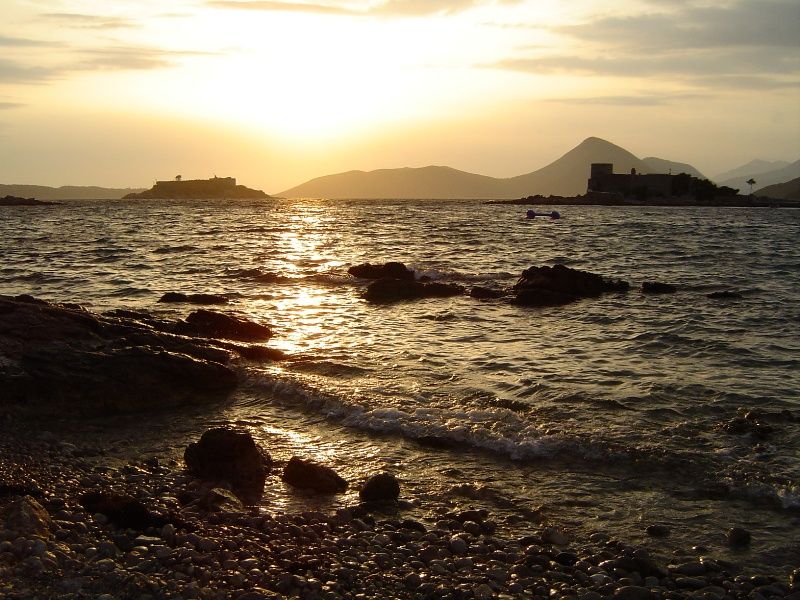
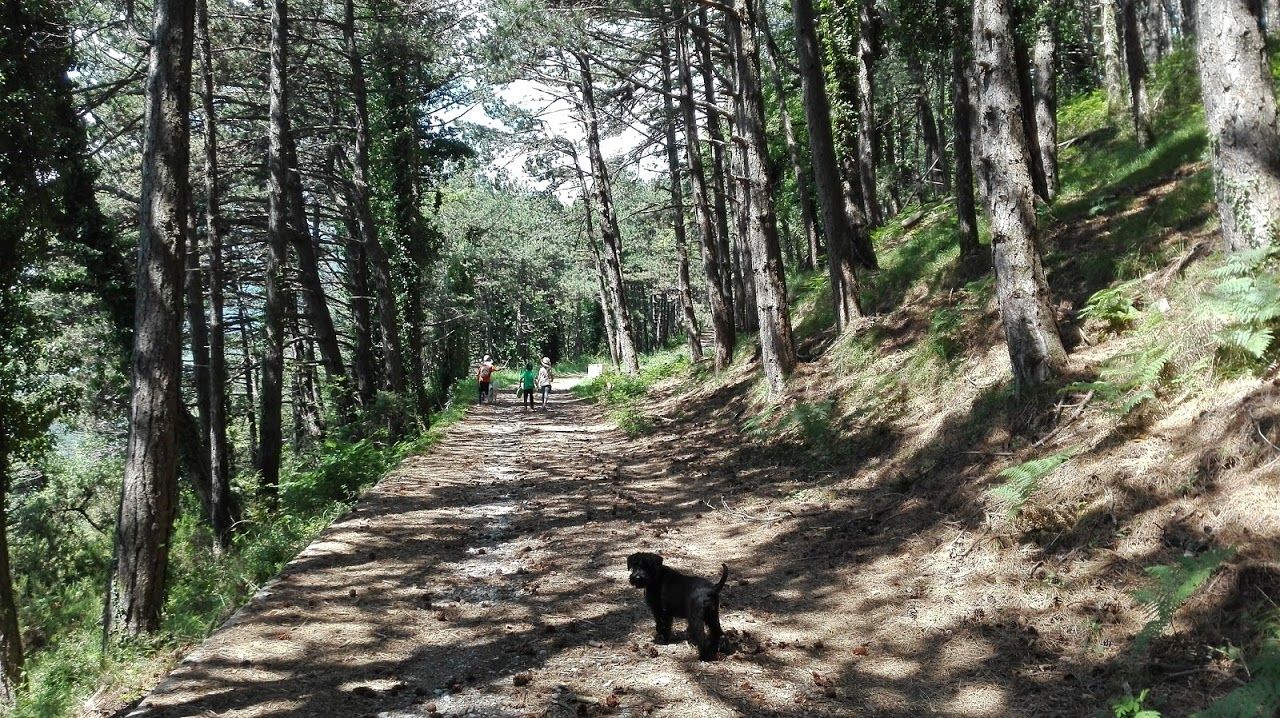
 photo by Antonela Stjepcevic
photo by Antonela Stjepcevic 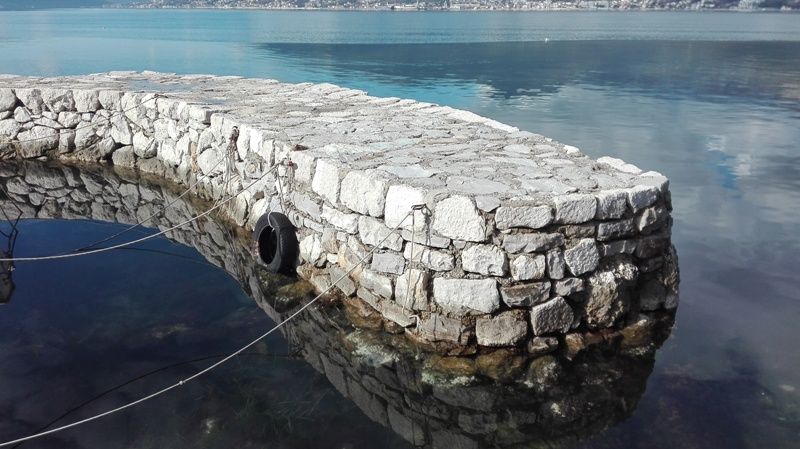 photo by Antonela Stjpcevic
photo by Antonela Stjpcevic 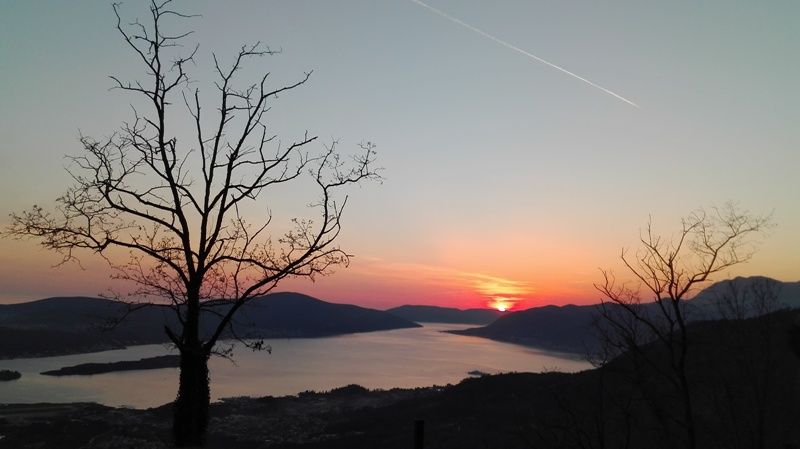 photo by Antonela Stjepcevic
photo by Antonela Stjepcevic 15 January 2019 - Stefan Milošević, the 22-year-old football player from Montenegro, signed a 3.5-season contract with Waasland-Beveren. He comes from the Montenegrin the First Division FK Iskra Danilovgrad.
Milošević drew attention on himself in the first part of this season, when he scored nine goals in eighteen matches for Iskra. Now he is on his way to the club where Montenegrin national player Aleksandar Boljevic is waiting for him.
Stefan chose to carry the number 99 on his new Beveren jersey.
Milošević has officially moved to Waasland-Beveren on January 15, 2019. He has signed a contract expiring on June 30, 2022. The financial details of the contract are undisclosed.
According to the representatives of Waasland-Beveren, he has the necessary scoring power. "He was wanted in this transfer period, but Stefan chose Waasland-Beveren as the first European adventure. Of course, we are very pleased with his choice and hope to see a lot of his qualities soon, and we are doing everything we can to get him to play as soon as possible," they said in an interview for Voetbal Belgie.
Waasland-Beveren is a Belgian association football club located in the municipality of Beveren, East Flanders. They play in the Belgian Pro League. Beveren takes the 14th place in the Belgian championship, with six points more than the last-placed Lokeren.
15 January 2019 - Relations between Montenegro and Croatia are extremely close and friendly, which is an excellent basis for further deepening of cooperation, especially between local communities, concluded at the meeting held by the Mayor of Podgorica, Ivan Vuković, and Croatian Ambassador Veselko Grubišić.
The Mayor of Podgorica pointed out that Montenegro highly appreciates the fact that Croatia always had strong support on the path of European and Euro-Atlantic integration. Croatia is one of the most important foreign trade partners of Montenegro. "We are pleased that we already have a solid number of Croatian companies here, as well many investments in the field of tourism," Vuković emphasized.
He stressed that Podgorica has experience in cooperation with a number of local communities in Croatia through IPA projects that are thematically diverse - from energy efficiency to wine tourism.
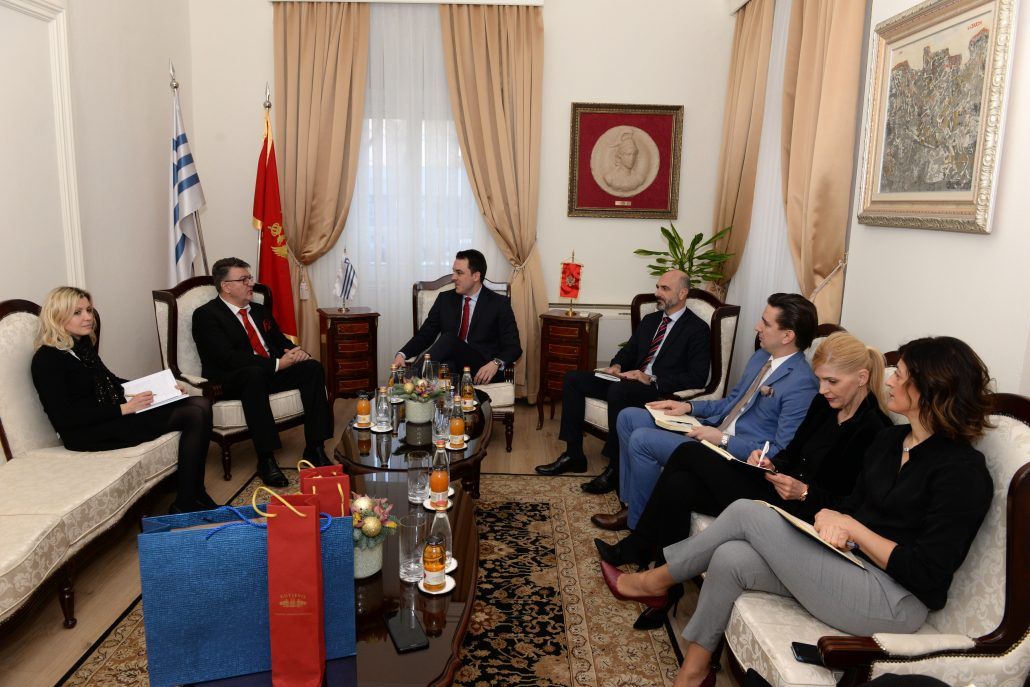
Recalling that the delegation from Zagreb was the first to visit Podgorica after the declaration of Montenegro's independence in 2006, the Mayor announced that the delegation from Podgorica would visit the capital of Croatia in a few weeks. He estimated that Podgorica could make much use of Zagreb's development experience, bearing in mind the enormous transformation that the city has experienced. Ambassador Grubišić agreed with this assessment, stressing that he had already spoken to Zagreb's leading people and that they were ready to share their experiences, especially in the field of tourism.
Mayor Vuković initiated the possibility of re-introducing the direct airline Podgorica-Zagreb, stressing that this would be a significant contribution to the further strengthening of the cooperation between the two countries and the two cities. The Croatian Ambassador said he was keen to discuss the issue with Croatia Airlines, assessing that it would be good to introduce a bound flight with some of the cities in the region like Mostar, Tirana or Skopje.
15 January 2019 - Strengthening cooperation between Montenegro, i.e. the Agency for Nature and Environment Protection of Montenegro, and the European Environment Agency (EEA), was the main topic of the meeting of Minister of Sustainable Development and Tourism Pavle Radulović and EEA Director Hans Bruyninckx. The improvement of the system for monitoring, measuring, reporting and informing citizens about the state of the environment, as well as improving the environment altogether, were in the focus of the meeting.
Minister Radulović expressed his satisfaction with the visit of the delegation of the European Environment Agency, pointing out that Montenegro has been cooperating with this institution for ten years now. Primarily, cooperation takes place through the Agency for the Protection of Nature and the Environment, but it also includes a national network of 23 contact persons in the competent institutions in charge of observing and collecting information for reports sent to the European Agency. Radulović stressed that Montenegro had been involved in the drafting of the environmental report at the European level for the third time, which is being done every five years.
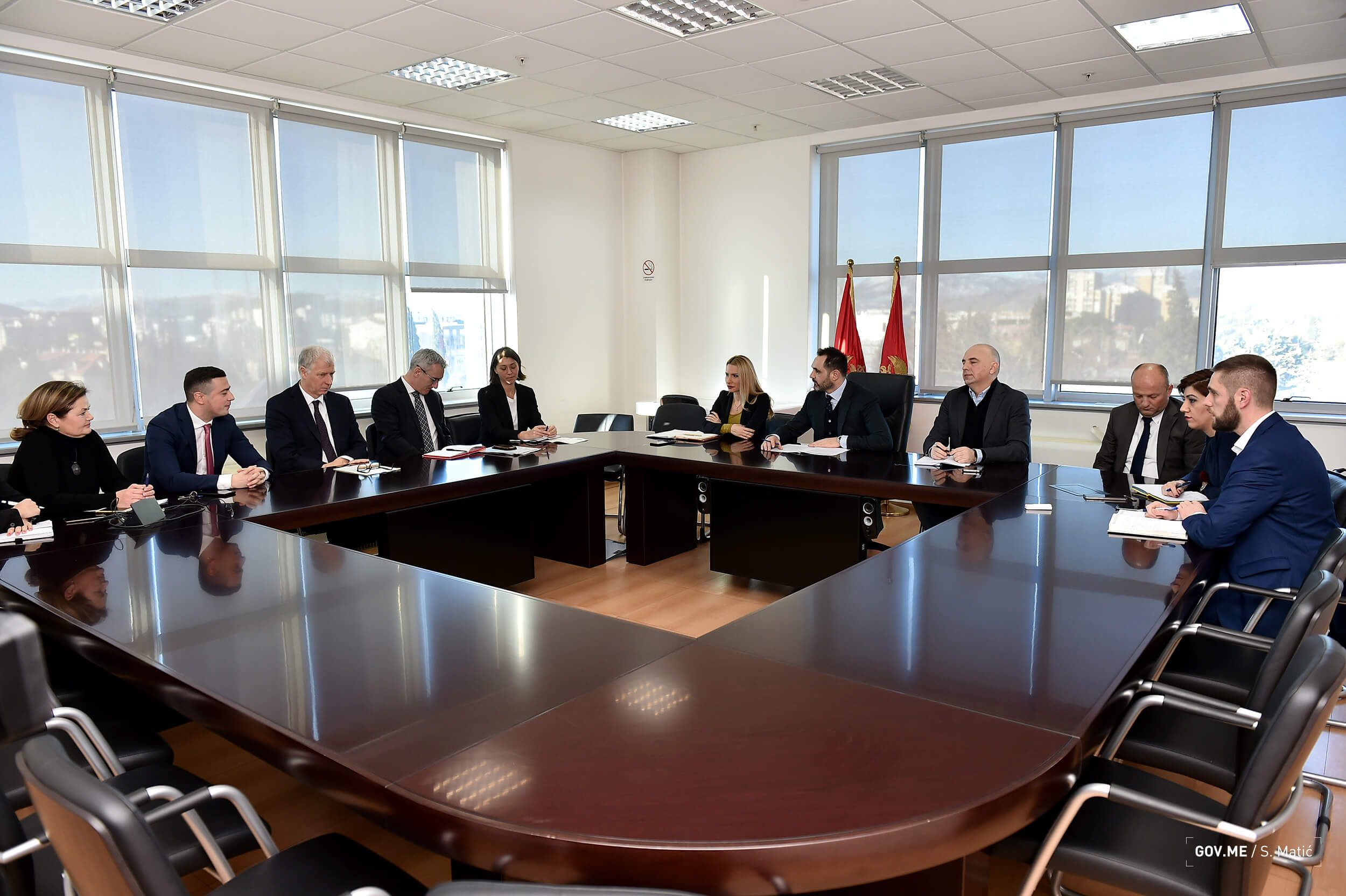
"At this moment, close cooperation with the European Environment Agency is crucial concerning closing Chapter 27. We have received encouragement that they are ready to support us on this road and appreciate our openness and cooperation, "said Radulović.
Director of the European Environment Agency, Hans Bruyninckx, stated that he is satisfied with the negotiations on further strengthening cooperation and improving the work of the Agency in Montenegro and the Balkans. "Our main ambition is to strengthen the knowledge that we must have to create sound policies and laws in the field of environment. Accurate indicators, good monitoring and reporting are crucial in moving towards a society that is greener and less affecting the climate," Bruyninckx said.
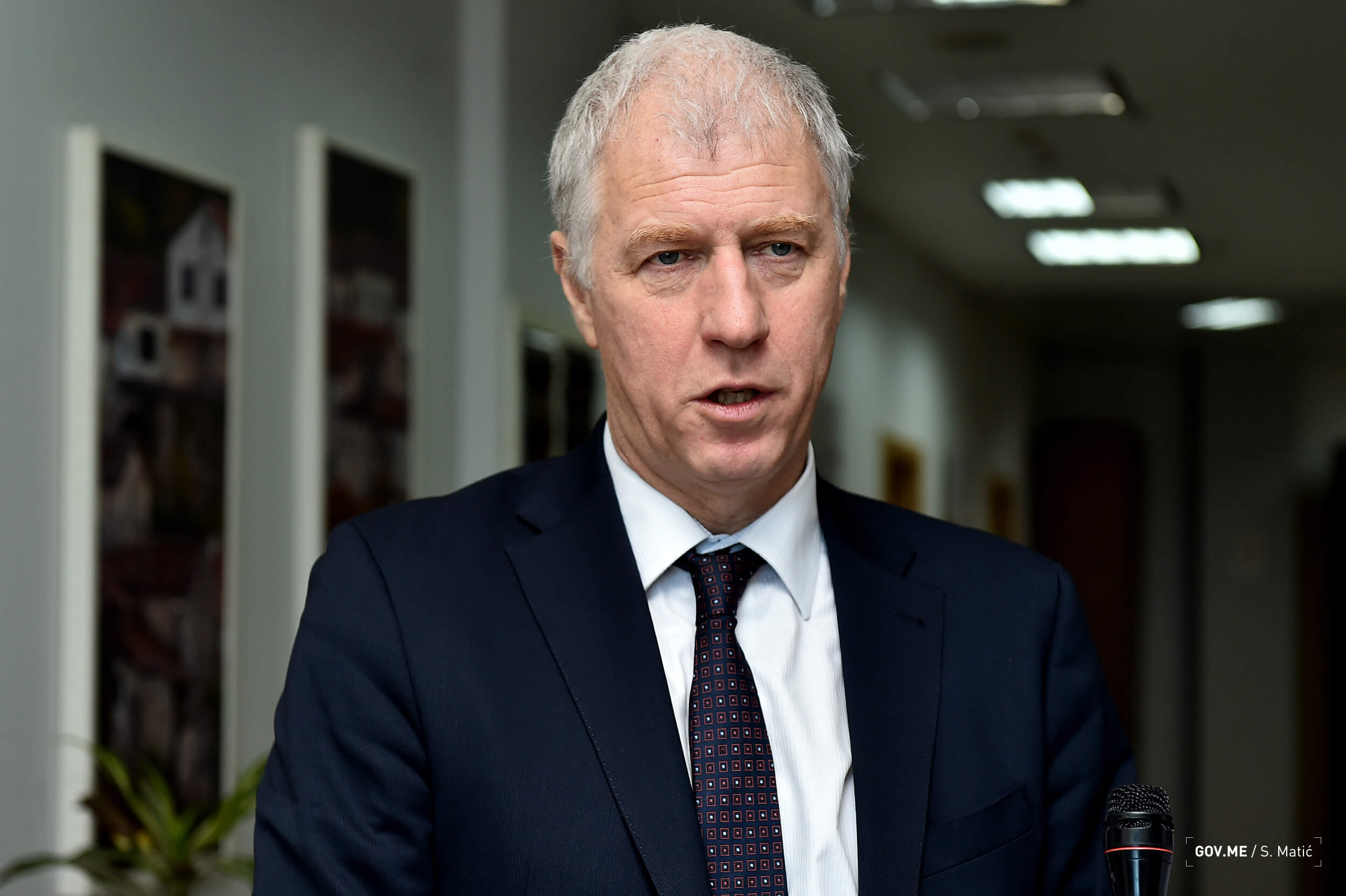
Nikola Medenica, director of the Agency for Protection of Nature and Environment of Montenegro, stressed that he sees the visit of the representatives of the European Environment Agency as a strong initiative to continue and strengthen the cooperation of the two institutions.
15 January 2019 - Members of Montenegrin Sports Hiking Club “Falcon” have successfully climbed Mountain Kilimanjaro on January 14, 2019.
On their Official Facebook Page “Planinarski Klub Soko Cetinje”, the representatives of the Hiking Club announced that they have successfully implemented their “Kilimanjaro 2019” expedition, sharing numerous photographs from Africa’s highest point.
Mount Kilimanjaro is the highest mountain in Africa, about 4,900 metres (16,100 ft) from its base, and 5,895 metres (19,341 ft) above sea level. Kilimanjaro is the most popular of the "seven summits" (the highest mountain on each of the continents) primarily because it's the most attainable. About 35,000 people a year attempt to reach the 5,895-metre summit.
The excitement of the Falcons is evident – they accomplished their goal and conquered the iconic mountain. “Africa under the feet of our Falcons!”, the Club representatives wrote and wished the members of the expedition a safe return.
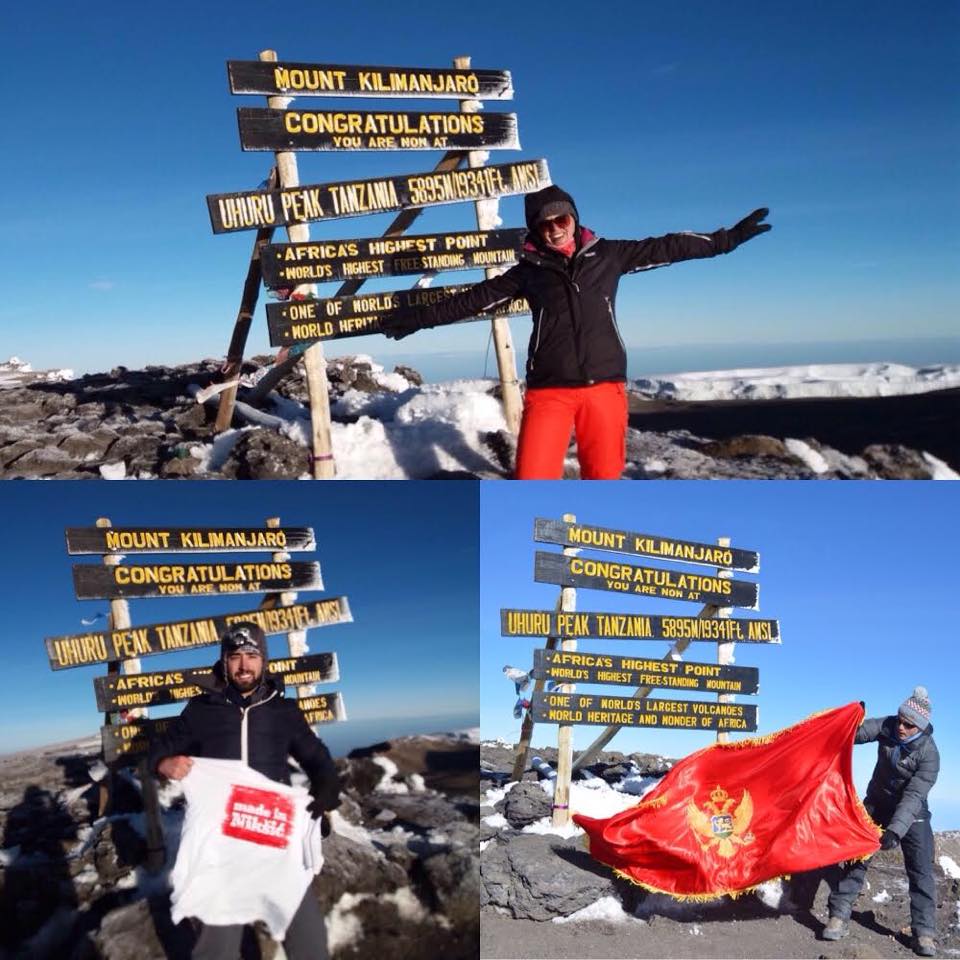
The three-member expedition, Dušan Kaluđerović, Dijana Borozan and Bojan Ćuković, can boast that they have completed the mission. Montenegrin News Agency TVCG interviewed them just before their departure, and even then they couldn’t hide the eagerness to get the adventure started. “A picture of a high mountain covered with snow, under which a vast, green plain spreads, full of life. The fantasy of one day walking down the slopes of this mountain brought me into the world of hiking. It was Kilimanjaro,” explained Dušan Kaluđerović.
Falcon’s Intensive communication with operators from Tanzania and demanding psychophysical preparations needed to reach the top of Africa lasted for months. Thanks to that, their first expedition outside the European continent will last 16 days in total, of which seven days will be reserved for ascent and descent from the mountain, while the rest of the time will be used to visit Tanzania.
“Kilimanjaro is definitely that one mountain that has always been on our list of peaks we want to conquer," Kaluđerović added just before their departure.
Some figures suggest that only 45 per cent of people who set out for the summit actually make it, which is why the team members are overjoyed that they managed to rise to the challenge on their first attempt.
The Montenegrin healthcare system provides adequate therapy and treatment for children with mental disorders, said Mevlida Gusinjac, Director the Directorate for Health Protection at the Ministry of Health.
In the Mental Health Report in Montenegro, the Ombudsperson stated that children with mental disorders do not exercise the right to complete, adequate and quality healthcare.
Gusinjac said that in Montenegro, within the health institutions at the primary level of health care and in the Clinical Center of Montenegro (KCCG), the treatment of children with mental disorders is organized.
According to her, numerous activities are being carried out in order to provide the conditions for organizing the services, i.e. the construction of the Clinic for psychiatry within the KCCG, which will include the department of child psychiatry. "Until the construction of this clinic, the health care system, as mentioned, provides adequate therapy and treatment for children with mental disorders," Gusinjac told MINA.
She pointed out that the Ministry of Health, as an imperative and an important challenge, recognized the care of children with psychiatric disorders.
"As it is a very sensitive category of population, very carefully, primarily systemically, we tend to provide adequate conditions for the medical treatment that is necessary for them," emphasized Gusinjac.
She explained that the first check-ups, for the detection and recognition of psychiatric disorders in a child, are performed by selected pediatricians in health centers. "They evaluate the mental development and mental maturity of children through ten preventive examinations in the first, second, fourth year of life, as well as before going to elementary school, in the second, fourth, sixth and ninth grade of the primary school, as well as in the first and third grade of the high school," Gusinjac explained.
Also, she adds, in the centers for children with special needs within the health centers there is a team of specially trained and educated pediatricians and psychologists, as well as a speech therapist and physiatrist.
Gusinjac pointed out that the Youth Counseling also works in health centers with participation of the selected pediatrician, psychologist and psychiatrist.
According to her, a psychiatrist for adults, as well as a child psychiatrist from Belgrade, was engaged in the KCCG Children's Institute, due to the lack of child psychiatrists. "So that children with mental disorders are provided with adequate and high-quality health care," Gusinjeć emphasized. As she explained, the decision on treatment is made by the whole team.
"A psychiatrist and a clinical psychologist, and if the need for additional treatments is required, the KCCG Psychiatric Clinic sends patients to the Institute of Mental Health or the Children's Clinic for Psychiatry in Belgrade, with which the Health Insurance Fund has concluded a treaty on providing the treatment," said Gusinjac.
She said that three Clinical Psychologists are working at the Clinical Psychiatric Clinic of the Clinical Center (KCG), while specialists of children's psychiatry who come from Belgrade have been engaged in the Center for Autism and are conducting examinations on the weekends.
"Currently there are three Doctors of Medicine specializing in child psychiatry and one psychologist specializing in clinical psychology, which will, after their completed education, improve the provision of health care for children with psychiatric disorders," Gusinjac said.
She stated that at present there are no registers of children with developmental disabilities and mental disorders.
Gusinjac explained that children's and young people's registers with psychophysical developmental disorders and psychosocial disorders, for the growth and development of children and youth, for psychoses, for personnel in the healthcare system and for institutions, are expected to be developed in the course of March.
Text by MINA News, on January 13th 2019, read more at Vijesti






